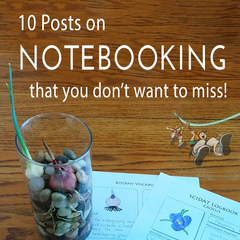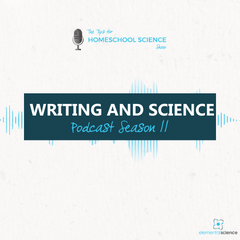The second session we are sharing as part of the opening of our conference vaults is Paige's second most popular one – Inspiring your students to love science through living books. This one is all about how to choose and use living books for science.
Ditch the textbook and pick these amazing and effective resources to teach science.
We'll be breaking up this session up into three easily-digested episodes, which we’ll share over a month. But we wanted to create one go-to place for you all to find the all the information for this session.
And be sure to check out the Elemental Science Virtual Homeschool Science Conference on YouTube to see the other sessions and take a tour of our programs.
Inspiring your students to love science through living books
Session Description: In this session, Paige defines what qualifies a book as “living” and shares how to use these resources effectively in your homeschool. She also gives several examples of how to foster a love of science in your students through the use of living books as spines or supplements in your homeschool.
Watch the full video of this session or keep scrolling to listen to the session in three parts.
Choosing and using living books for science, part 1
Takeaway Tidbits from Part 1
->See this episode's outline and show notes.
Living books make a subject come alive for your students.
A living book is a book that engages the reader and draws them into learning more about a certain subject.
As homeschoolers, we can use both living books and encyclopedias for well-rounded approach to learning about science.
Additional Resources for Part 1
Check out the following articles for more tips on choosing and using living books for science:
- The second question on everybody's lips - living books, textbooks, or encyclopedias
- 10 posts you must read about living books
- A list of living books for science
What it looks like to use living books for science (Elementary Years), part 2
Takeaway Tidbits from Part 2
->See this episode's outline and show notes.
When you use living books for science with elementary students, you will read and enjoy, do narrations, and complete hands-on projects.
Elementary students are like an empty bucket begging to be filled.
When you read living books with the elementary crowd your main focus is to introduce them to the material in an interesting way.
Additional Resources for Part 2
Check out the following articles for more tips on living books and elementary students:
- How to use living books with elementary students
- Writing in Homeschool Science: The Elementary Years
- How to use living books with multiple ages
- 5 Sanity-saving tips for maximizing learning during read-aloud time
What it looks like to use living books for science (Middle School), part 3
Takeaway Tidbits from Part 3
->See this episode's outline and show notes.
When you use living books for science with middle school students, you will read and enjoy, expect written work, add-in relevant non-fiction books, and do experiments.
Middle school students are full of unorganized information from the elementary years.
When you read living books with the older crowd your main focus is to feed them with important facts in a memorable way.
Additional Resources for Part 3
Check out the following articles for more tips on living books and middle school students:


